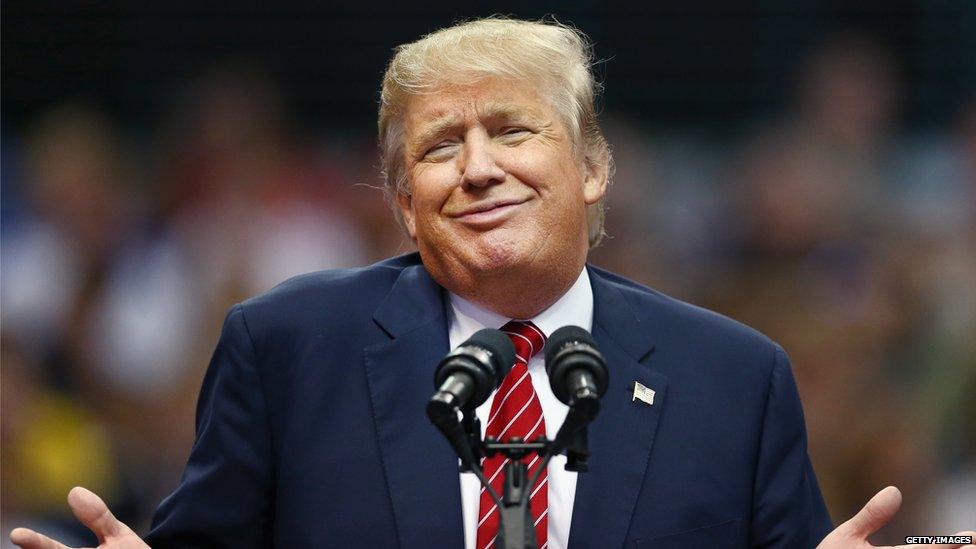What is Trump's economic plan?
- Published
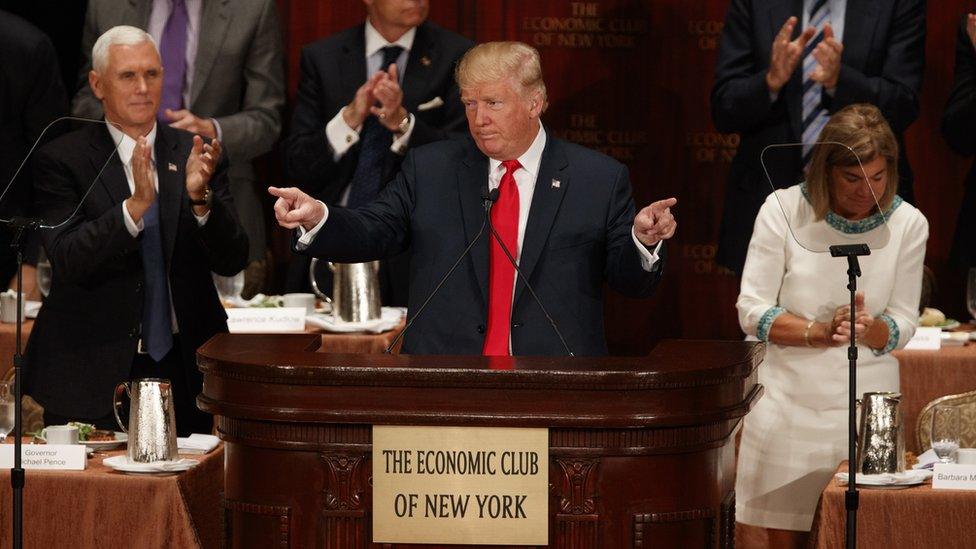
Mr Trump called his plan "the most pro-growth, pro-jobs, pro-family plan put forth perhaps in the history of our country"
The Republican candidate for US president has vowed to increase economic growth, cut taxes, shrink the federal government and increase spending.
Mr Trump unveiled his new proposal following widespread criticism that his initial plan was too costly.
"Everything that is broken today can be fixed, and every failure can be turned into a great success," Mr Trump said.
He called for an annual growth rate of 4%, a rate which hasn't been seen since the Bill Clinton presidency in the 1990s.
With a current US growth rate of around 2%, what exactly is the billionaire businessman proposing?
What's in Trump's plan?
Donald Trump calls his plan "the most pro-growth, pro-jobs, pro-family plan put forth perhaps in the history of our country".
tax cuts of $4.4 trillion (£3.3 trillion) over the next 10 years
creating only three tax rate brackets: 12%, 25%, and 33%, depending on income
revised tax code promises that no business should pay more above 15%
a "Penny Plan", by which 1% of government would be shrunk
boost military spending and infrastructure spending
create 25 million new jobs over the next decade
The US economy is currently creating 2.5 million jobs a year, and is therefore already on pace to achieve Mr Trump's goal.
"My plan will embrace the truth that people flourish under a minimum government burden and will tap into the incredible, unrealised potential of our workers and their dreams," Mr Trump declared.
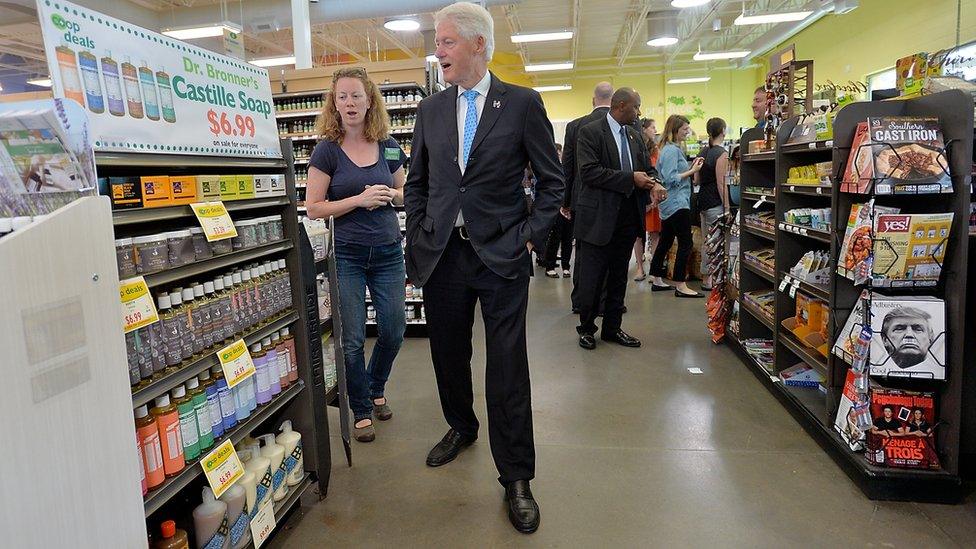
Bill Clinton was president the last time the US achieved the growth rate that Trump proposes
What has changed?
In an plan unveiled earlier in the year, external Mr Trump proposed $10 trillion (£7.6 trillion) in tax cuts, which many economists considered too large and costly.
He has now reduced his proposal to $4.4 trillion (£3.3 trillion) over the next decade.
Just this week Mr Trump also introduced plans for a guaranteed six-week maternity leave, which he says will be paid for by cutting unemployment benefits.
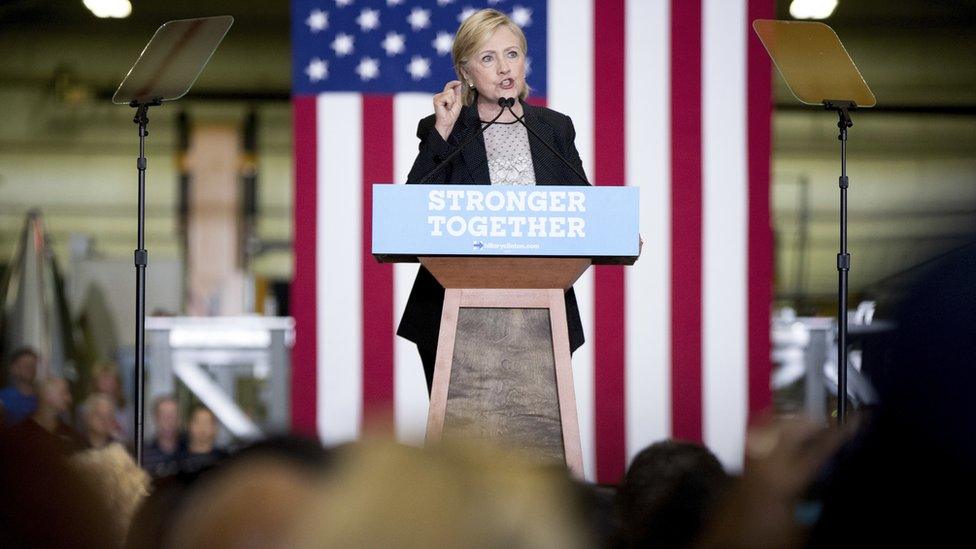
Clinton has called for more job training, infrastructure spending, investment in new energy as part of her economic plan
An economic adviser for John McCain during his 2008 campaign praised Mr Trump's reworked plan.
"Trump took the budgetary criticism seriously, and made a case that it actually adds up," said Douglas Holtz-Eakin.
How does it differ from Clinton's plan?
Mr Holtz-Eakin, says that Trump's new proposal brings him more in line with what his contender, Hillary Clinton, has proposed but the two plans still look remarkably different.
Mrs Clinton wants to raise taxes on the wealthy, lower taxes for businesses that hire Americans, and continue with President Barack Obama's reduced defence budget, known as the sequester.
Mrs Clinton does prioritise the policing of illegal immigration as Mr Trump does, and she does not plan to build a wall on the US-Mexican border. Economists have debated the true cost of a 1,989 mile (3200 km) wall, but most agree that it will be very expensive.
Mr Trump says that Mexico will "pay for the wall", but the Mexican government has rejected that notion.
Neither candidate has proposed cuts to costly "entitlement programmes" such as the public pension and healthcare plans known as Medicaid and Medicare.
What do economists say?
Cutting government by one percent will not achieve much since it does not address entitlement spending, says Oren Cass, a former adviser to Mitt Romney, the previous Republican presidential candidate who lost to President Obama in 2012.
The government programmes that Mr Trump intends to cut will not yield many savings, some economists believe.
"When you look at a lot of these, the theory is nice, but the reality is there's only going to be a small amount of savings," said economist Marc Goldwein.
Maya MacGuineas, president of the bipartisan Committee for a Responsible Federal Budget, said Mr Trump's plan is still lacking in certain details and relying on risky forecasts.
"He's moving in the right direction by pursuing a less costly tax plan and identifying some spending cuts to help pay for it. But the plan appears to rely on rosy assumptions and murky policy changes," she said.
The plan was hailed by the conservative Club for Growth, who said it "should be the centrepiece of what he runs on".
- Published16 September 2016
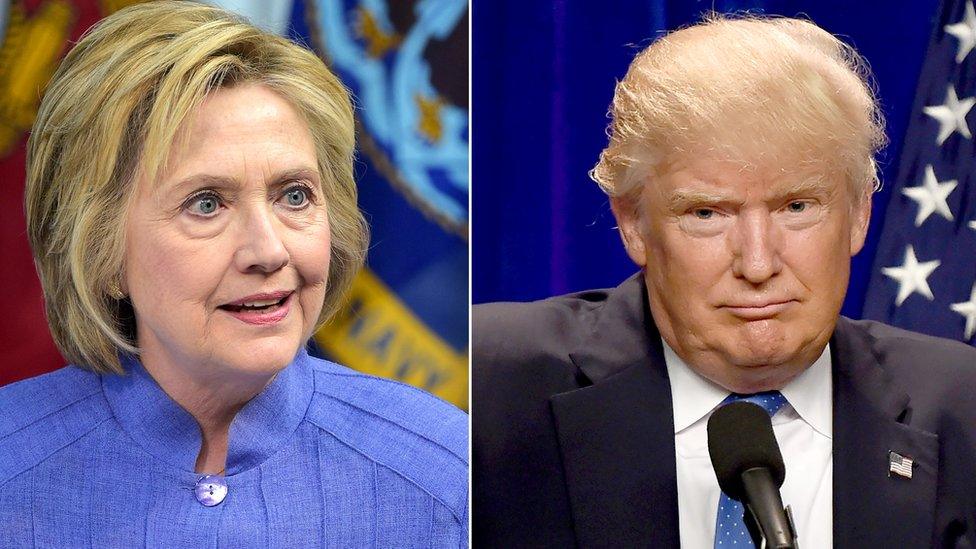
- Published8 August 2016
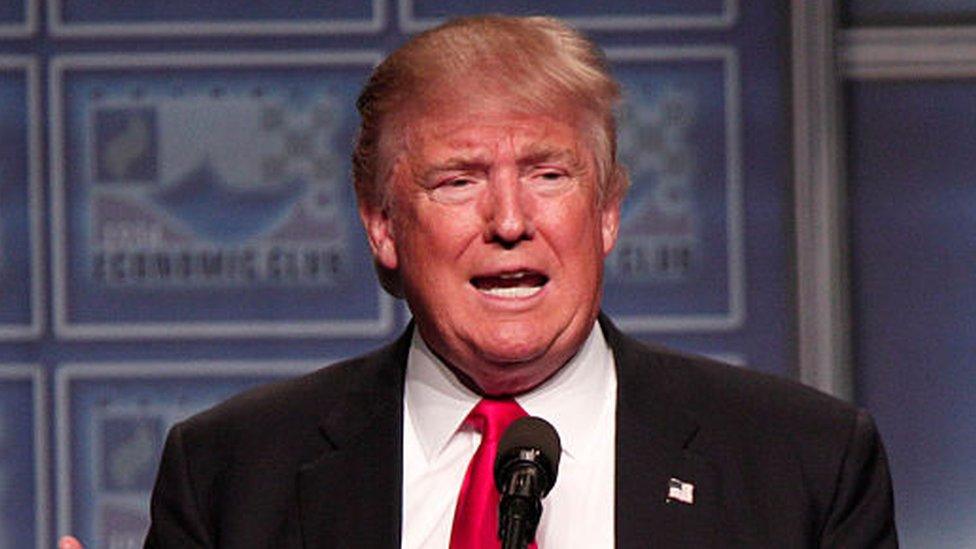
- Published17 March 2016
